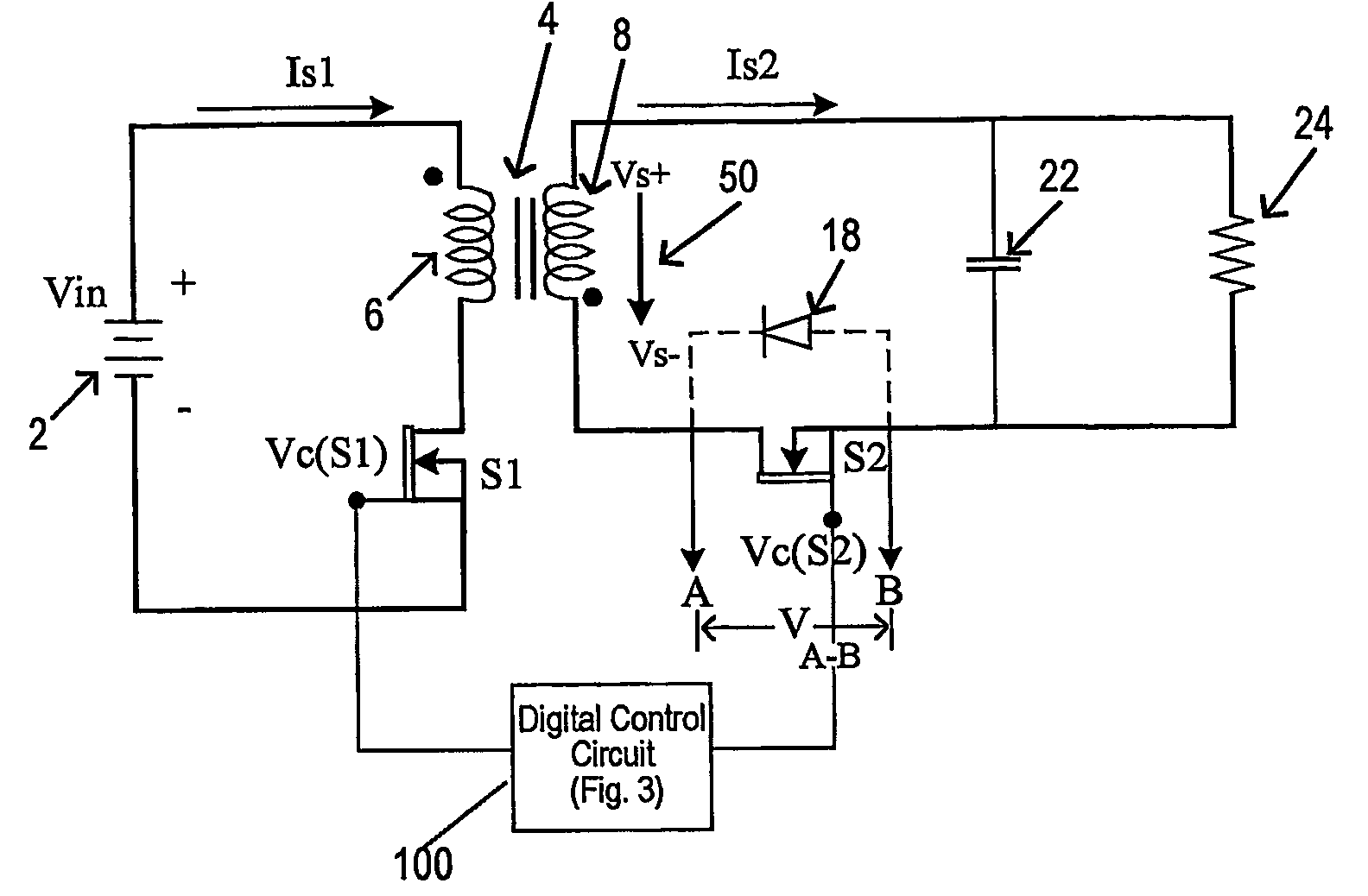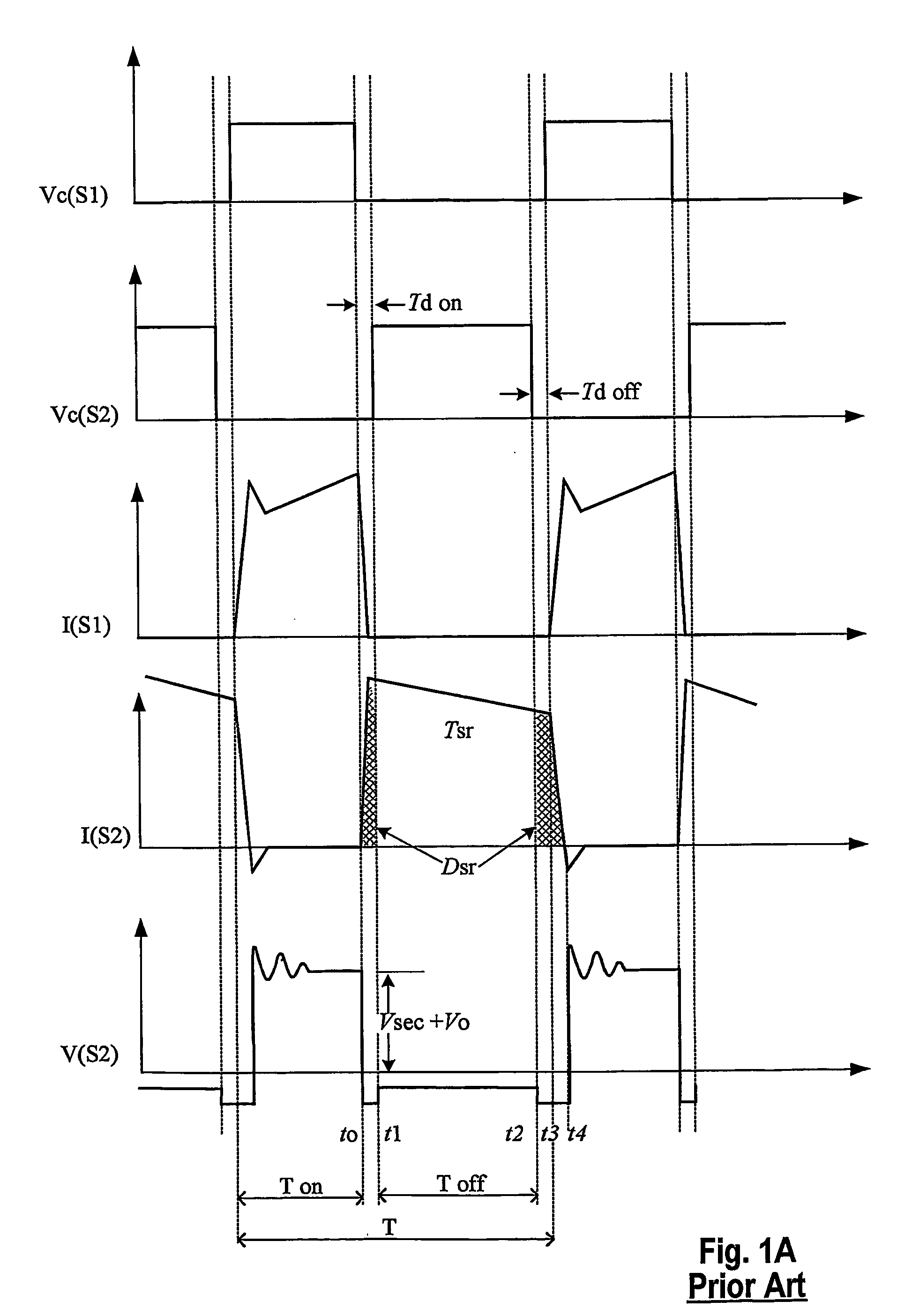High efficiency flyback converter
a high-efficiency, converter technology, applied in the direction of ac-dc conversion, efficient power electronics conversion, electric variable regulation, etc., can solve the problems of reducing the overall affecting the general power balance or total power use of the circuit, and the diode rectifier's forward voltage drop becoming the dominant power loss, etc., to achieve the effect of reducing the power loss
- Summary
- Abstract
- Description
- Claims
- Application Information
AI Technical Summary
Benefits of technology
Problems solved by technology
Method used
Image
Examples
Embodiment Construction
[0030] The approach used to control the synchronous rectifier of a DC-DC flyback converter according to this invention is first described in relation to the improved basic schematic of the flyback converter shown in FIG. 2. In the flyback converters of FIGS. 1 and 2, like elements bear like reference numerals. The voltage source 2 supplies the input circuit formed by the primary winding 6 of the power transformer 4 connected in series with the switching MOSFET S1. The switching transistor S1 is controlled by a signal Vc(S1). The output circuit of the flyback converter contains the secondary winding 8 of the power transformer 4 connected in series with the synchronous rectifier S2 and the output load 24. The output voltage obtained on the load is filtered by the capacitor 22. The body diode 18 of the synchronous rectifier is also represented as it plays a role in the operation of the circuit. According to one preferred embodiment of this invention, besides the main switch control sig...
PUM
 Login to View More
Login to View More Abstract
Description
Claims
Application Information
 Login to View More
Login to View More - R&D
- Intellectual Property
- Life Sciences
- Materials
- Tech Scout
- Unparalleled Data Quality
- Higher Quality Content
- 60% Fewer Hallucinations
Browse by: Latest US Patents, China's latest patents, Technical Efficacy Thesaurus, Application Domain, Technology Topic, Popular Technical Reports.
© 2025 PatSnap. All rights reserved.Legal|Privacy policy|Modern Slavery Act Transparency Statement|Sitemap|About US| Contact US: help@patsnap.com



